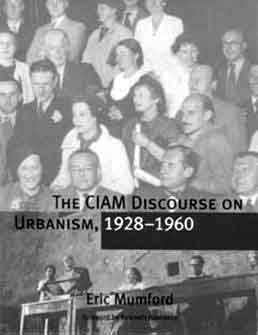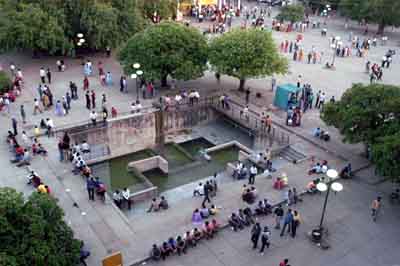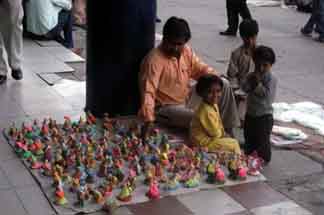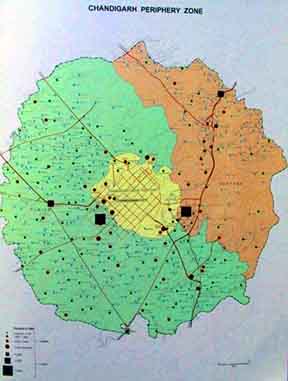Apr 16, 2024
Apr 16, 2024
Chandigarh was planned by Le Corbusier as a CIAM (Congrès International d’Architecture Moderne) city. The CIAM was a group of architects and urban planners who formulated rules for an ideal city for the modern age in the so-called Athens Charter. In brief, the CIAM city divided human functions into work, living and leisure, and the city in its strict zoning of functions was to reflect this division of human life into cycles.
 At the time, the CIAM charter was designed to rid cities of the post-Industrial Revolution overcrowding and inhuman conditions which had characterized many European and American cities of the late 18th and early 19th centuries. The CIAM city called for ample space, light and green areas, and stressed on the need to lead a dignified human existence. That the modern age also meant a new moral order was implicit in the CIAM charter, as well as the fact that architecture and urbanism could be the tools by which this new order could be brought about. "Urbanization cannot be conditioned by the claims of a pre-existent aestheticism; its essence is of a functional order… the chaotic division of land, resulting from sales, speculations, inheritances, must be abolished by a collective and methodical land policy."
At the time, the CIAM charter was designed to rid cities of the post-Industrial Revolution overcrowding and inhuman conditions which had characterized many European and American cities of the late 18th and early 19th centuries. The CIAM city called for ample space, light and green areas, and stressed on the need to lead a dignified human existence. That the modern age also meant a new moral order was implicit in the CIAM charter, as well as the fact that architecture and urbanism could be the tools by which this new order could be brought about. "Urbanization cannot be conditioned by the claims of a pre-existent aestheticism; its essence is of a functional order… the chaotic division of land, resulting from sales, speculations, inheritances, must be abolished by a collective and methodical land policy."
 In its egalitarianism, the CIAM city responded well to the needs of a new capital city of modern India and dovetailed neatly with the founding principles liberty and equality of the new republic. Chandigarh answered to two agendas: CIAM on the one hand and the new India on the other, and was supposed to represent the best of both.
In its egalitarianism, the CIAM city responded well to the needs of a new capital city of modern India and dovetailed neatly with the founding principles liberty and equality of the new republic. Chandigarh answered to two agendas: CIAM on the one hand and the new India on the other, and was supposed to represent the best of both.
Sector 17, Chandigarh (c) IJS Bakshi
In its wide avenues and streets, its green spaces running right through the heart of the city, its socialist bent to housing design, Chandigarh was right from the start very different from existing Indian city cores. That this difference existed not only on paper but also in reality was apparent from a visit to the city – its stark emptiness and apparently over-scaled spaces were reminiscent more of a ghost town than a living, breathing organism.
This has all changed today, and with startling rapidity. Designed for a population of 500,000, Chandigarh today is the cultural, commercial, administrative and educational centre of north India, second in importance only after Delhi. India Today, in a survey, ranked Chandigarh as the richest of Indian cities (on the basis of per capita income). Traffic jams and debates on pollution are now increasingly a common feature of the cleanest Indian city. Slums, squatters and filth, once thought to be the preserve of ‘other’ cities, are no longer strangers to Chandigarh.
It is clear that something has gone wrong with the CIAM ideal city.
Reinforcing class inequality? – The Chandigarh Master Plan
That Chandigarh has not developed as planned, at least in some ways, is a reflection of the limitations of architecture and urban planning as tools to engineer social change on the one hand, and inherent flaws in the master plan on the other.
 Firstly, the Chandigarh plan assumes that human activity can be regulated just as a city plan can be on paper, by division into rigid zones of work, living and leisure. This is a form of assumed social control that is difficult, if not impossible, to enforce in a democratic country. It is difficult to class people into neat categories, and equally difficult to categorize human activity and imagine that it will not change over time. Image by IJS Bakshi shows Street Vendor at Sector 17, Chandigarh.
Firstly, the Chandigarh plan assumes that human activity can be regulated just as a city plan can be on paper, by division into rigid zones of work, living and leisure. This is a form of assumed social control that is difficult, if not impossible, to enforce in a democratic country. It is difficult to class people into neat categories, and equally difficult to categorize human activity and imagine that it will not change over time. Image by IJS Bakshi shows Street Vendor at Sector 17, Chandigarh.
Thus the Chandigarh plan, while making ample provision for the classes of people the city was originally meant for – administrators and bureaucrats, politicians and refugees – made very little concession towards the people who actually ran the city – the sweepers and the rickshawallas, the street vendors and the hawkers, the construction workers and the hired labor. It is these people and their daily business that fills up the interstices of the city – the spaces which are no-man’s land, which belong in principle to everyone and thus to no-one. In its inherent arrogance, the Chandigarh plan failed to provide space for the very people without whom the city could not be run as a functioning organism.
 Secondly, Le Corbusier was a great architect, but his intrinsically instinctive approach seemed to be less conducive to practical urbanism. This translated into a flawed appreciation of how cities develop, and the real estate issues that go hand in hand. Thus, while Chandigarh was supposed to develop evenly along its three phases of development, the reality is that there is a hierarchy in the city plan, which runs from north to south, and in this hierarchy the northern sectors are more privileged than the rest, with lesser densities, more infrastructure, and better upkeep. It is no wonder that they are the living places of the city’s elite – the politicians and bureaucrats, and the wealthiest and oldest families of city. There is hierarchical development in every city – but that there is one in Chandigarh as well, a city which had as its main goals the suppression of class struggle – is a measure of the limitations of planning on basic human instinct.
Secondly, Le Corbusier was a great architect, but his intrinsically instinctive approach seemed to be less conducive to practical urbanism. This translated into a flawed appreciation of how cities develop, and the real estate issues that go hand in hand. Thus, while Chandigarh was supposed to develop evenly along its three phases of development, the reality is that there is a hierarchy in the city plan, which runs from north to south, and in this hierarchy the northern sectors are more privileged than the rest, with lesser densities, more infrastructure, and better upkeep. It is no wonder that they are the living places of the city’s elite – the politicians and bureaucrats, and the wealthiest and oldest families of city. There is hierarchical development in every city – but that there is one in Chandigarh as well, a city which had as its main goals the suppression of class struggle – is a measure of the limitations of planning on basic human instinct.
Chandigarh Periphery Zone (From Inner Spaces – Outer Spaces of a Planned City) (c) Gopal Krishan
The plan gives very little concession to political reality. While Le Corbusier mired Chandigarh in an idealistic world – no development around the city for 16 kilometers to preserve its ‘green’ character – the fact is that the neighboring states of Haryana and Punjab have profited from the city by developing, promoting and finally selling townships of their own – Panchkula and Mohali. Till date, these towns, though having a sizable population of their own, do not have sufficient infrastructure to support it – and thus it is Chandigarh which now supports a daytime population much larger than what it was originally meant for. Chandigarh, Panchkula and Mohali are now rapidly taking on the characteristics of a metropolis, and combining together to create a much larger city than the original 47 sectors of Chandigarh. This fact has no reflection in the Chandigarh plan, which still talks about Chandigarh as an isolated island, oblivious to all external development.
An Uncertain Future?
It is clear that there is no political will to touch the basic precepts of the Le Corbusier plan. Being a Union Territory, Chandigarh is administered by officials on transferable jobs, officials who have barely enough time to learn the ropes before they leave. There is thus a crisis of management – at the very top, where such decisions can be taken, there is no one to take a decision which will take years, if not decades, to realize.
In the meantime, the original building byelaws of the city are also relics of a past forgotten. Again, following CIAM principles, the byelaws of Chandigarh were designed to ensure a certain uniformity in building. However, while guarding against really bad building, the byelaws also stifle, and one of the critiques of Chandigarh has been that it discourages individuality. There is thus this unspoken war between constructors of new buildings and the administration – the former testing the limits of what they can get away with, and the latter using a mixture of threats and cajoling to limit, if not stop, open flouting of the law.
What is Chandigarh today? In spite of the strict injunctures of the Corbusier plan, it is clear that the city has come a long way from the ghost town of the 60s and 70s. The speed at which the city is growing is swamping the master plan, and the need for change to accommodate the new reality is only too apparent. Who will take the responsibility for this change, to see through a plan for Chandigarh for this century?
For the moment there are no takers.
19-Dec-2004
More by : Ashish Nangia